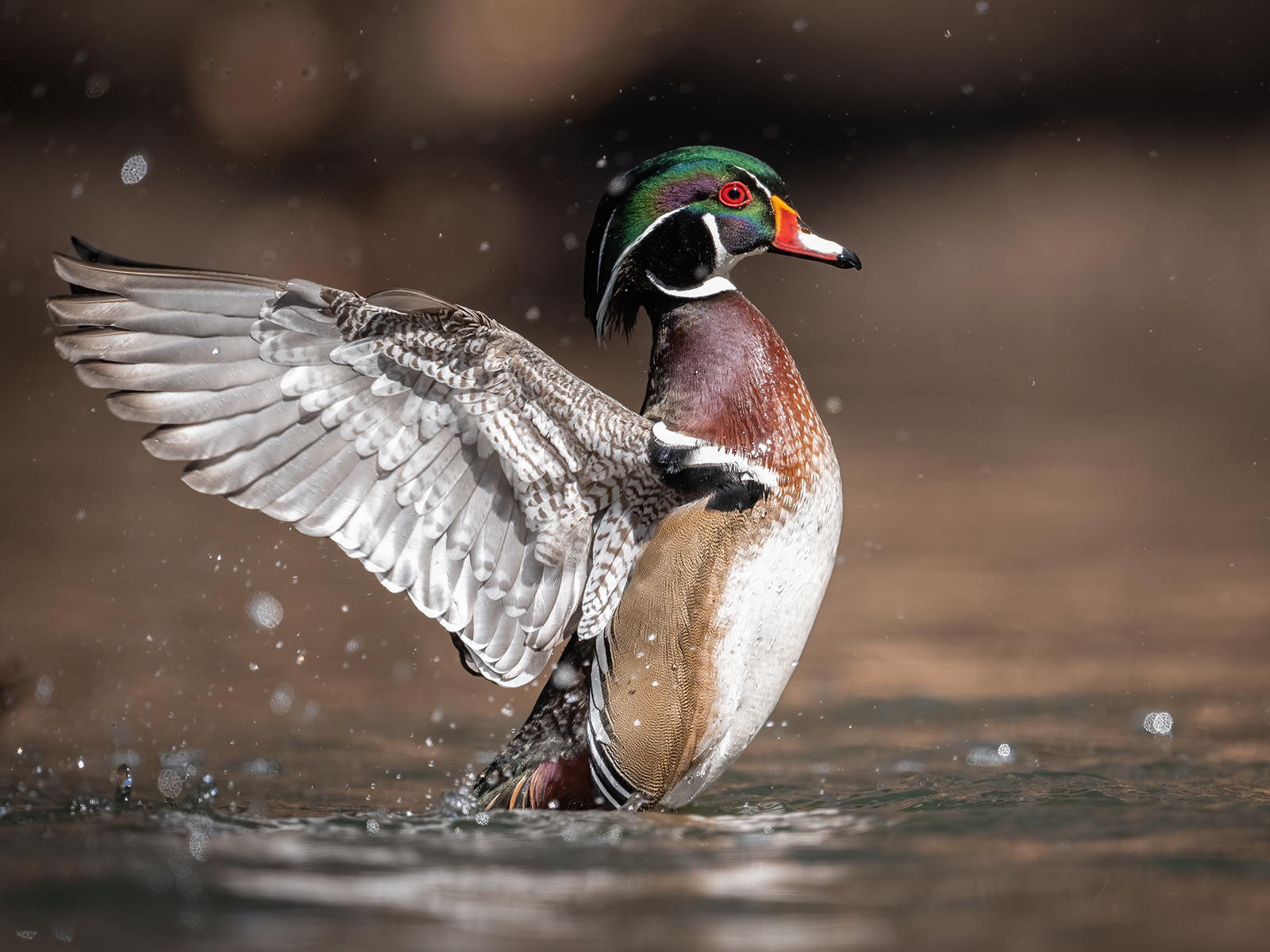North American Wood Duck
Aix sponsa
Class
Aves
Order
Anseriformes
Family
Anatidae
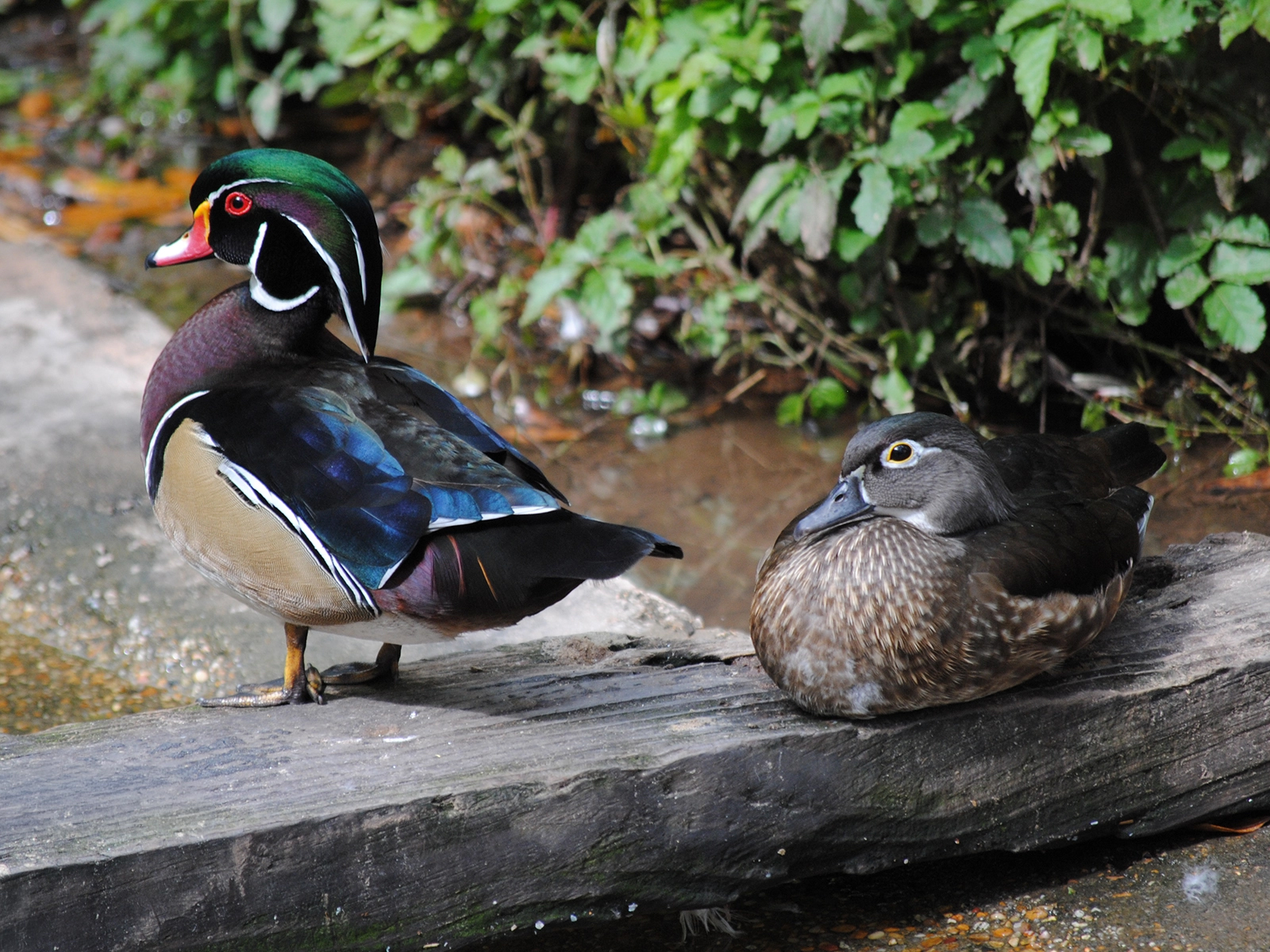
Aves
Anseriformes
Anatidae
Southern Canada to northern Mexico
Length: 18 - 21 in
Wingspan: 26 - 28.7 in
Weight: 16 - 30 oz
Freshwater swamps, marshes, lakes, and calm rivers edged by forests
Clutch of 6 - 16 eggs
Incubation: 28 - 37 days
Fruits, seeds, plants, and insects
Least Concern
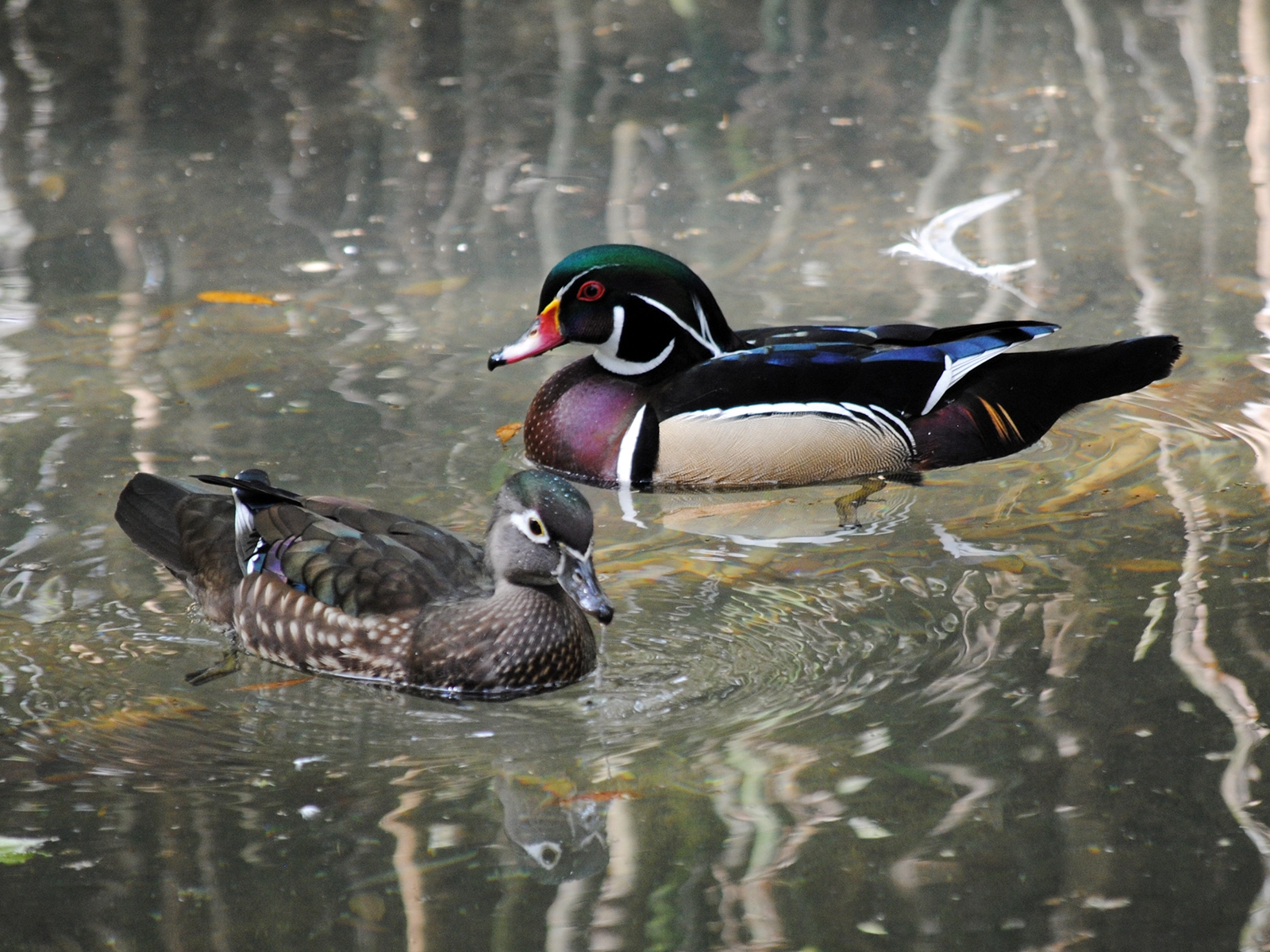
Males have brightly colored heads, with iridescent green, blue and purple markings, red eyes and white lines running from the bill to the back of the head. Females have brownish-gray heads with white rings around the eyes.
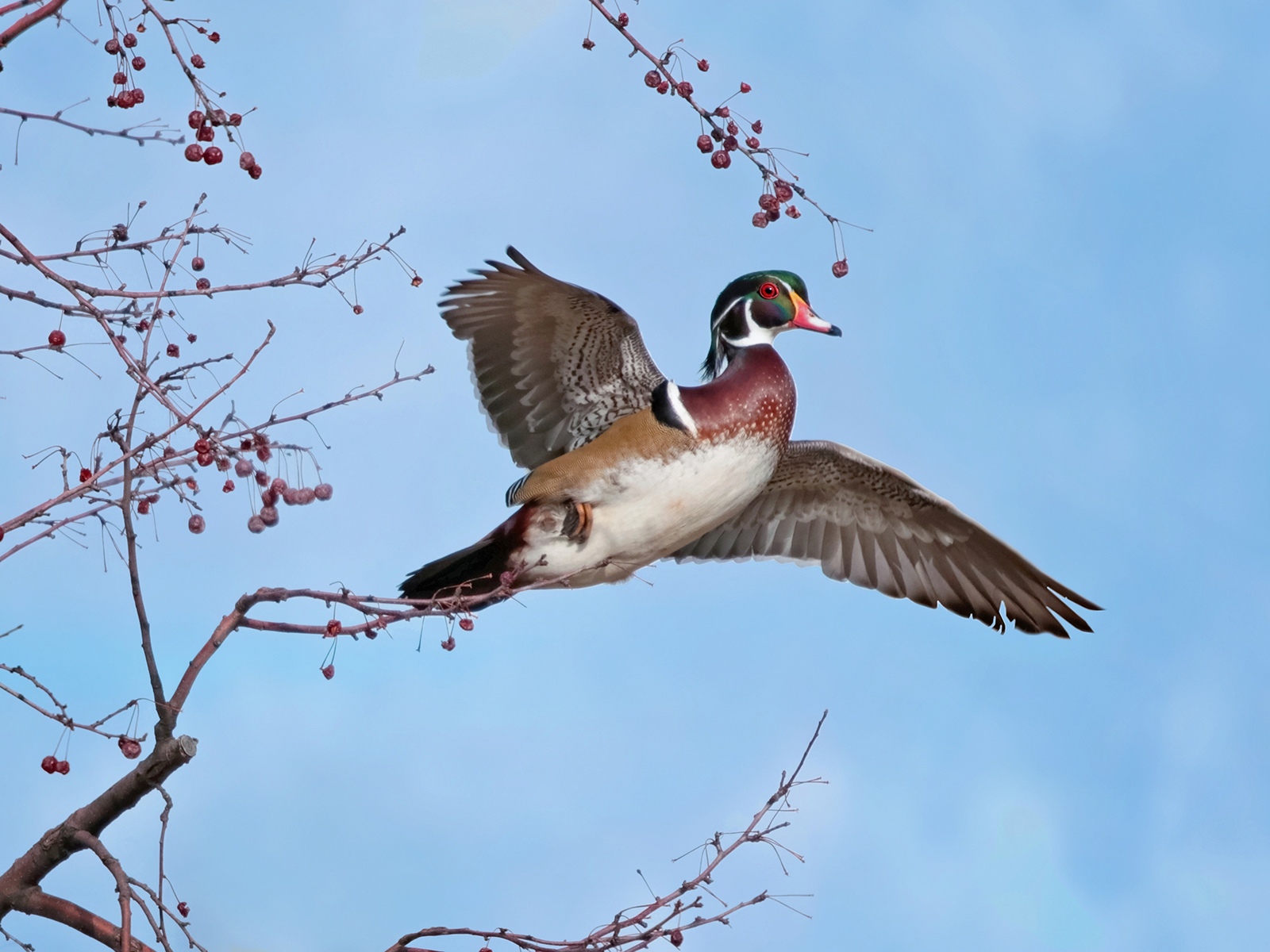
They are strong fliers and can reach speeds of 30 mph. Wood Ducks feed by dabbling or short, shallow dives.
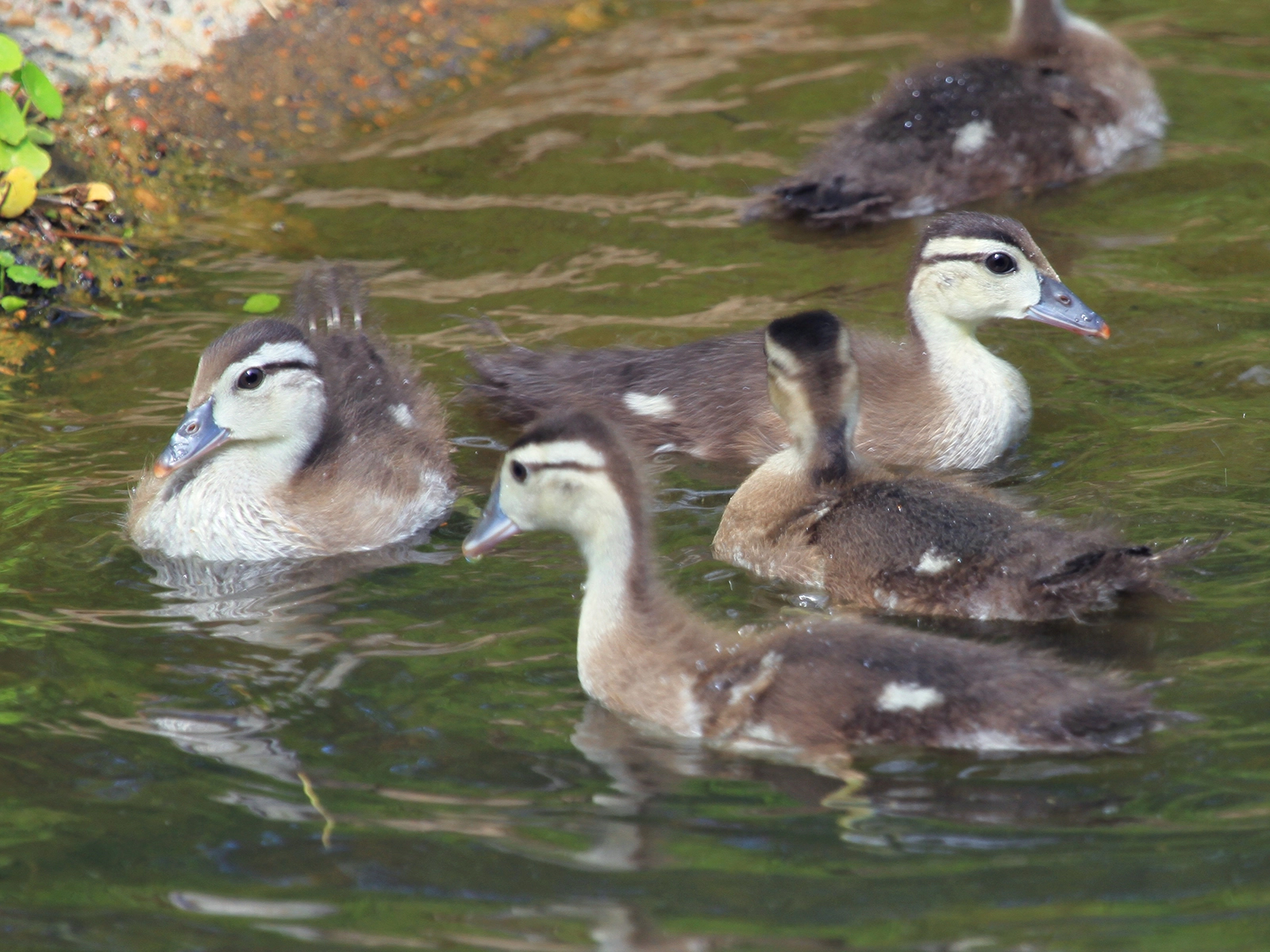
Females nest in tree cavities to incubate their eggs. After hatching, ducklings jump down from their nesting site (which may be more than 250 feet up!) and make their way straight to water. Females will care for their ducklings for six to eight weeks, at which point they will wander away to molt. Ducklings fledge at about eight weeks of age.
As cavity nesting birds, North American wood ducks rely on dead trees which are often in short supply. They readily uses nest boxes provided for them.
Install Nest Boxes: You can build and install specialized wood duck boxes near suitable forested waterways. These boxes provide safe nesting cavities where natural tree hollows may be scarce. Ensure the boxes are properly maintained and protected from predators.
Retain Dead Trees (Snags): If safe to do so, leave standing dead trees (snags) near water bodies. These natural cavities are vital homes for wood ducks and other cavity-nesting birds.
